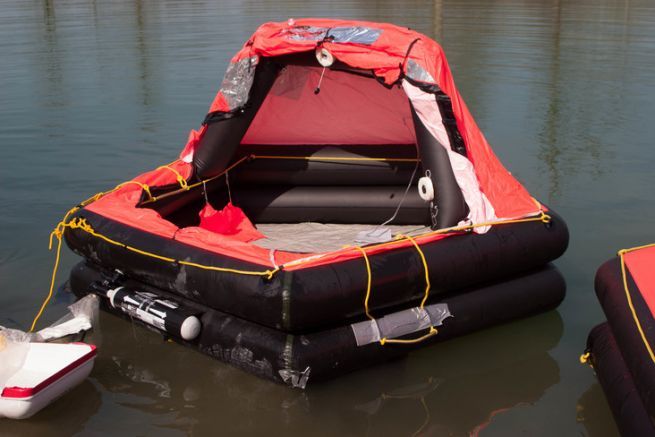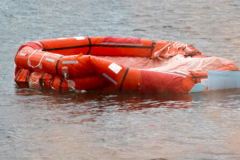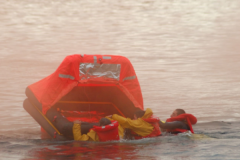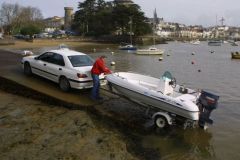First of all, we hope you never need to use this grab bag. Let it stay in its corner, tidied up carefully, filled when you get on board and emptied when you come back from a walk on the water, for the pleasure and well-being of all!
A grab bag? I already have one on my dinghy!
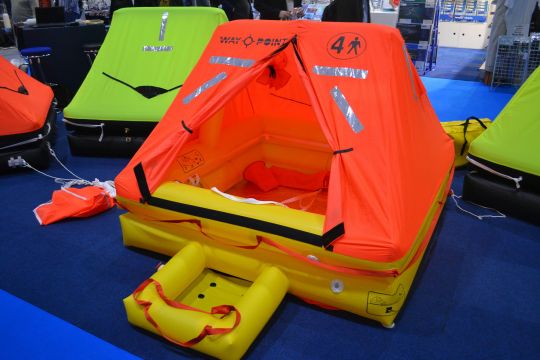
Life rafts today are equipped with the "minimum vital", which differs according to whether one is equipped with a means of survival "less than 24 hours" (the rescue team will be on site within 24 hours) or "more than 24 hours" (in this case, one will have to be patient and learn to sing to pass the time). This grab bag is regulated in its contents and we are not talking about removing or adding anything to it, especially since it may be inaccessible because it is "pre-loaded" on the survival craft.
The grab bag that we are talking about here is the one that you are going to have as you go out on the water, but which must, in any case, be handy and sufficient, so that nothing is missing for any crew member if you have to abandon your boat.
For packaging, choose a bag that is preferably watertight (in this case, when you close it, remember to store enough air to keep it floating), a kayak can (to be avoided, very unwieldy if you have to climb an accommodation ladder) or a simple garbage bag. The important thing is that it exists on the one hand, that it floats on the other hand and that it provides the minimum protection against water and humidity to its contents. For the look side, we leave you free, of course, to take it off with little flowers if you like!
What's a grab bag?
From the English words "to grab" and "bag", a grab bag is literally the last thing a skipper will take with him before abandoning his boat. It will follow you when you are picked up by the rescuers or when you board your raft.
What's in the bag?
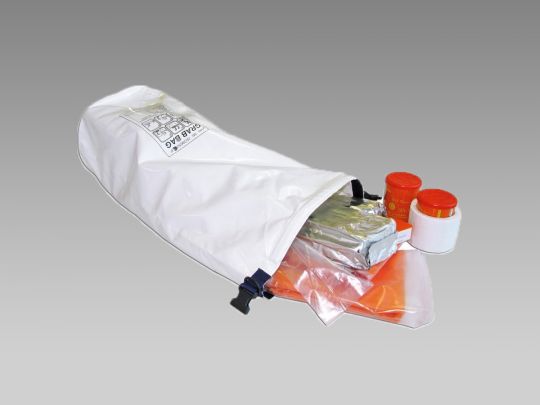
If the collective effects (water, survival blankets, lamp...) are already part of the raft's equipment, it may be useful to add some accessories:
- A lamp with its batteries charged separately
- A mobile phone loaded with a SIM card (and its waterproof pouch)
- A waterproof portable VHF radio running on (charged) batteries
- A multi-tool "leatherman" type
- A copy of the ship's papers (certificate of francization...) that you will have taken the precaution of having laminated, or at worst packed in watertight pouches
- Some food. If you have a weakness for chocolate (who doesn't?), because it gives you the morale... A good bar of chocolate!
Following this, we suggest that each crew member add his or her own minimum vitalis, which should, a priori, include
- Passport (or any identity document) and their copies (same remark as for the boat's papers, beware of humidity)
- Vital medicines (ventolin, insulin, hypotension...) and, in case of travel abroad, the original prescription for these treatments (some medicines common in our regions are totally prohibited elsewhere)
- Keys (car, home...)
- A bottle of good wine (though...)
- Ideally, so that the effects of each do not mix, in easily identifiable "sub-bags".
And what do I do with it?
As you have understood, this grab bag is both a place for the physical "storage" of each person's belongings, it will also be the ultimate object which, when seized at the time of abandonment of the ship, will represent the captain's last "act of boarding".
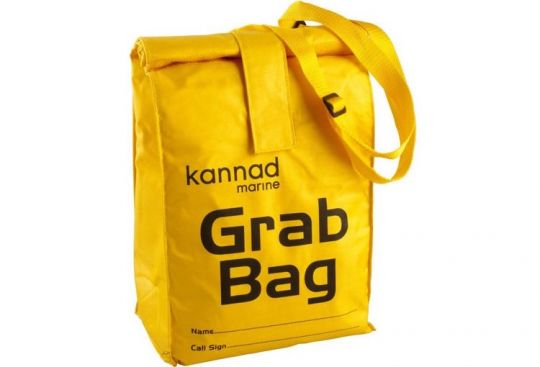
Since every crew member is concerned by this bag ( if only because he deposited his wallet there, for example.. ), it is important for everyone to be aware that it must be taken away in case of a glitch.
What's the point?
Although its preparation may seem procedural, the grab gab is an important psychological crutch that allows you to anticipate a little better the stress of abandoning a boat following a damage. It is up to each boater to adapt its contents to his or her habits, tastes or beliefs while maintaining the "life condensed" nature of this bag. Not having it at your disposal will obviously not prevent you from enjoying your outings on the water. Disposing of it will be one less thing to think about, what's done is no longer to be done!
Enjoy the water ... In serenity!
